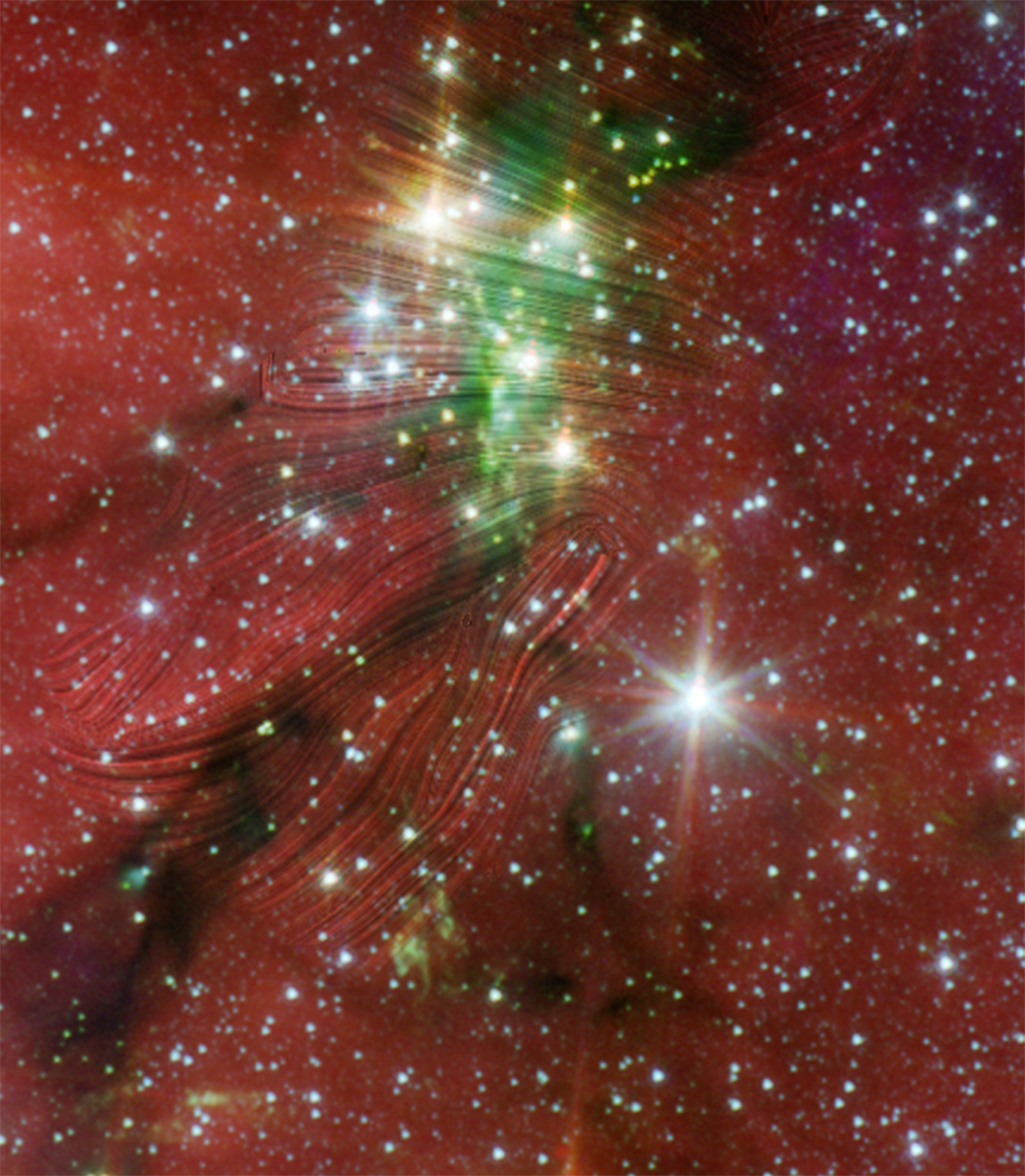Stars like our Sun form when clouds of gas and dust collapse under gravity. But how does the material get from interstellar space into these clouds and what controls their collapse?
This image shows narrow, spindle-like structures, called filaments, that act like rivers channeling material into the Serpens South star cluster, a group of more than 60 young stars that is forming in a dense cloud of gas and dust nearly 1,400 lightyears away. NASA’s telescope on an airplane, the Stratospheric Observatory for Infrared Astronomy, or SOFIA, discovered magnetic fields in the region can further fuel star formation. The fields, shown as streamlines over an image from NASA’s retired Spitzer Space Telescope, have been dragged by gravity to align with the narrow, dark filament on the lower left — helping material flow down it. This is different from the upper parts of the image, where the magnetic fields are perpendicular to the filaments as they oppose gravity.
Scientists are studying the dense cloud to learn how magnetic fields, gravity and turbulent gas motions contribute to the creation of stars. Once thought to slow star birth by counteracting gravity, as seen in the upper parts of the image, SOFIA’s data reveals some instances where magnetic fields may actually be working together with gravity as it pulls the fields into alignment with the filaments, nourishing the birth of stars.
Understanding the role of celestial magnetic fields in the universe is challenging because they are invisible to most telescopes. SOFIA’s HAWC+ infrared instrument is able to observe dust grains as they align perpendicular to the fields, allowing scientists to infer the strength and direction of the magnetic field. Additional observations are needed to fully understand the complex relationships among the forces responsible for creating new stars.
SOFIA, the Stratospheric Observatory for Infrared Astronomy, is a Boeing 747SP jetliner modified to carry a 106-inch diameter telescope. It is a joint project of NASA and the German Aerospace Center, DLR. NASA’s Ames Research Center in California’s Silicon Valley manages the SOFIA program, science and mission operations in cooperation with the Universities Space Research Association headquartered in Columbia, Maryland, and the German SOFIA Institute (DSI) at the University of Stuttgart. The aircraft is maintained and operated from NASA’s Armstrong Flight Research Center Hangar 703, in Palmdale, California.
























